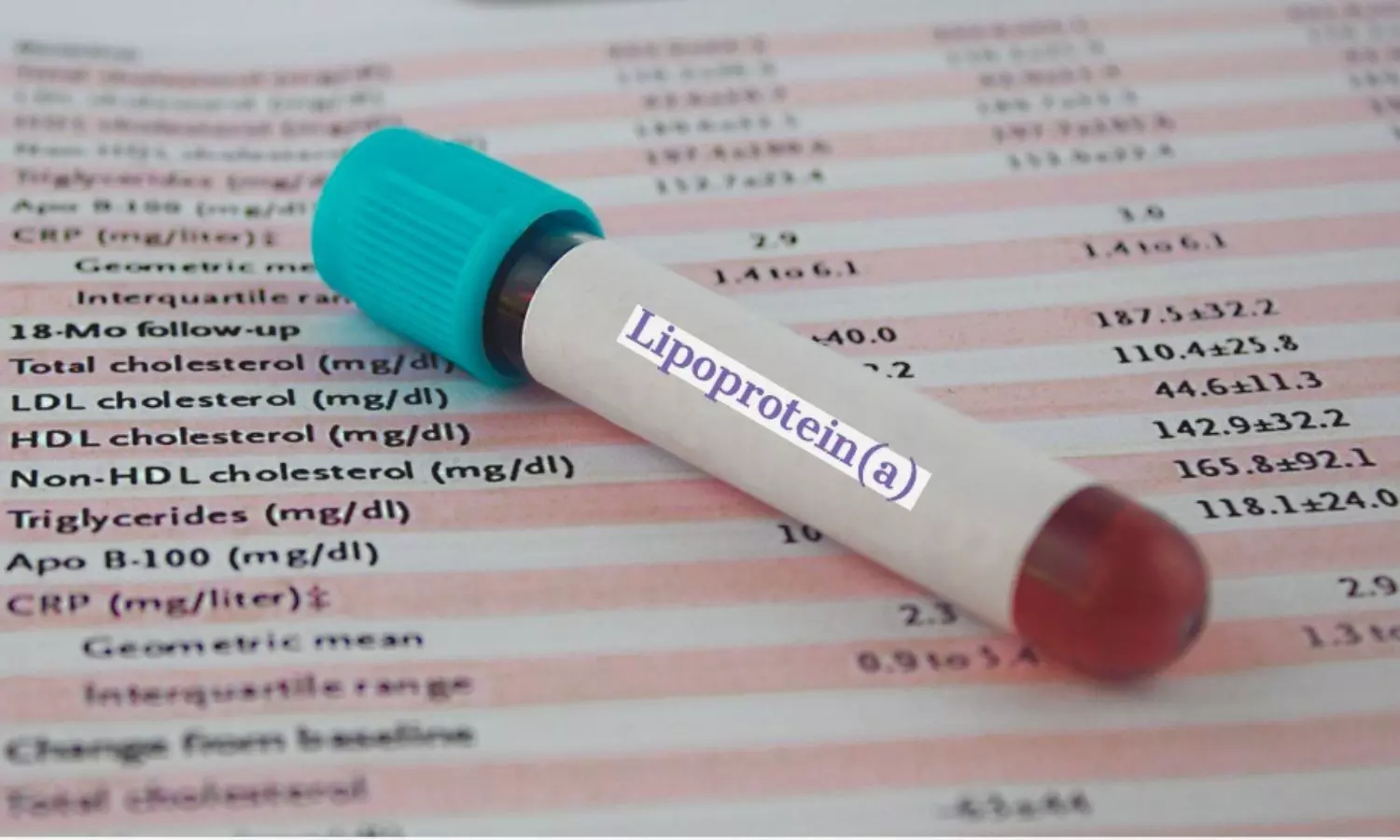Olpasiran effective therapeutic option for lowering lipoprotein(a) levels, suggests study

A new study published in the Journal of the American College of Cardiology found that strong siRNA that lowers lipoprotein(a) (Lp(a)) over an extended period of time is olpasiran. Nearly a year after the previous dosage, the individuals receiving doses over 75 mg Q12W saw a ∼40% to 50% drop in Lp(a) levels. Apolipoprotein(a) (apo(a)) is covalently bonded to apoB100 within a modified low-density lipoprotein (LDL) particle to form lipoprotein(a) (Lp(a)). A substantial amount of data points to Lp(a) as a causative factor in the processes that encourage calcific aortic valve disease and atherogenesis. Based on Mendelian randomization studies, a significant decrease in Lp(a) could be necessary in order to provide a significant therapeutic effect.
Olpasiran is a small interfering RNA (siRNA) molecule linked to N-acetylgalactosamine (GalNAc) that obstructs the expression of the LPA gene by causing the messenger RNA encoding apo(a) to break down, thereby stopping the hepatocyte from assembling the Lp(a) particle. Olpasiran is a small interfering RNA (siRNA) that inhibits the translation of apolipoprotein(a) mRNA, hence blocking the formation of lipoprotein(a) (Lp(a)). This research by Michelle O’Donoghue and colleagues evaluated both the longer-term safety and the timing of Lp(a) returning to baseline following olpasiran withdrawal.
In the phase 2 dose-finding trial OCEAN(a)-DOSE (Olpasiran Trials of Cardiovascular Events And LipoproteiN[a] Reduction–DOSE Finding Study), a total of 281 participants with atherosclerotic cardiovascular disease and Lp(a) >150 nmol/L were enrolled to receive one of four active doses of olpasiran versus placebo (10 mg, 75 mg, 225 mg Q12W, or an exploratory dose of 225 mg Q24W administered subcutaneously). Week 36 was the last dosage of olpasiran, and after week 48, there was a minimum 24-week prolonged off-treatment follow-up period.
276 individuals (98.2%) of the total study population started the post-treatment follow-up phase. The mean duration of the trial encompassed both treatment and non-treatment periods, was 86 weeks (Q1-Q3: 79-99 weeks). At 60, 72, 84, and 96 weeks, the off-treatment placebo-adjusted mean percent decrease from baseline in Lp(a) for the 75 mg Q12W dosage were −76.2%, −53.0%, −44.0%, and −27.9%, respectively (all P < 0.001).
For the 225 mg Q12W dosage, the corresponding off-treatment decreases in Lp(a) were −84.4%, −61.6%, −52.2%, and −36.4% (all P < 0.001). In the follow-up phase of the extension, no additional safety issues were found. Overall, the RNA interference of Olpasiran causes a significant decrease in Lp(a), with long-term pharmacodynamic effects that last for many months after therapy is stopped.
Source:
O’Donoghue, M. L., Rosenson, R. S., López, J. A. G., Lepor, N. E., Baum, S. J., Stout, E., Gaudet, D., Knusel, B., Kuder, J. F., Murphy, S. A., Wang, H., Wu, Y., Shah, T., Wang, J., Wilmanski, T., Sohn, W., Kassahun, H., & Sabatine, M. S. (2024). The Off-Treatment Effects of Olpasiran on Lipoprotein(a) Lowering. In Journal of the American College of Cardiology (Vol. 84, Issue 9, pp. 790–797). Elsevier BV. https://doi.org/10.1016/j.jacc.2024.05.058



